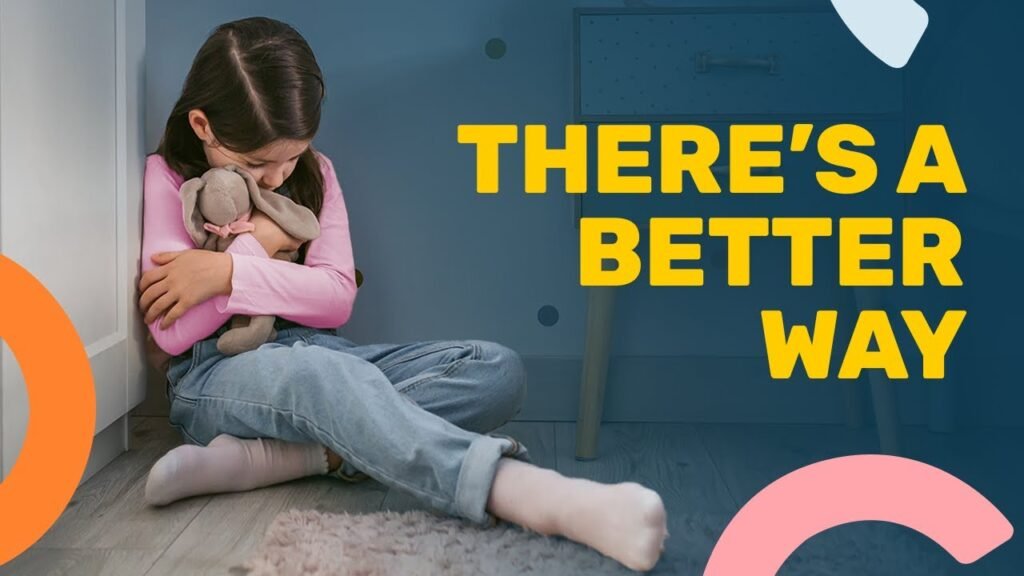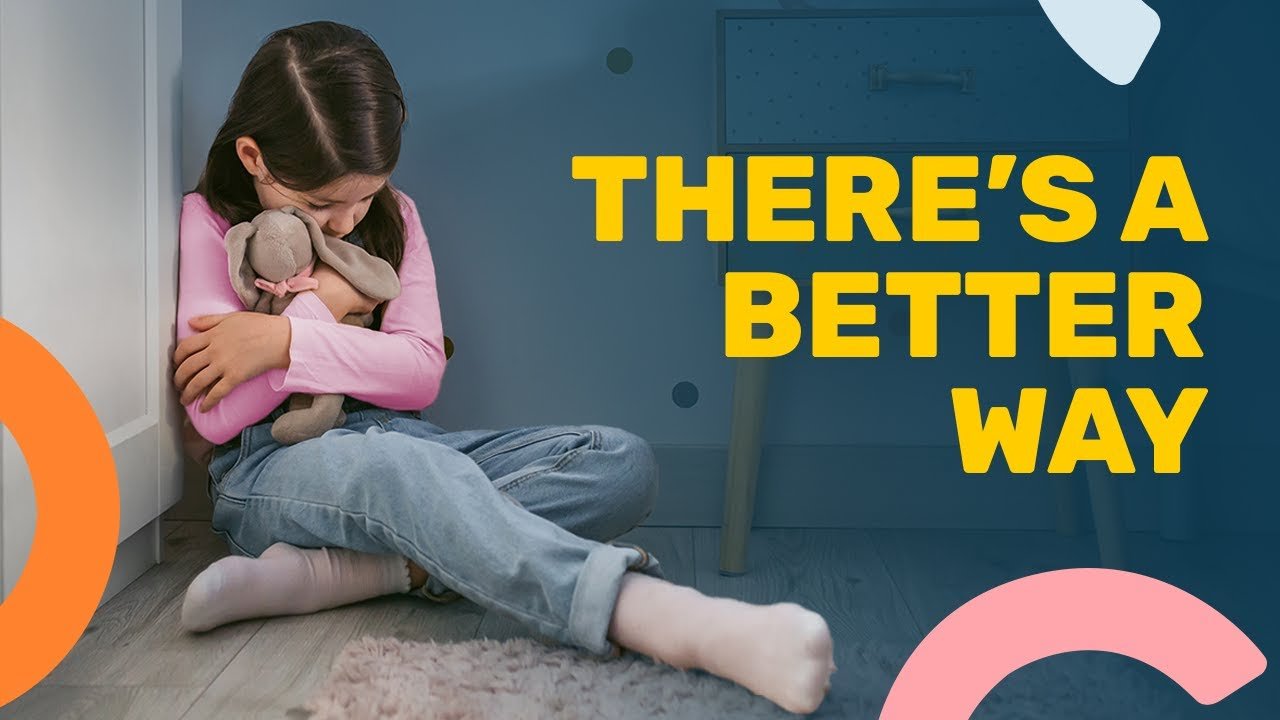Are you tired of using punishment methods that just don’t seem to work with your toddlers? Well, you’re not alone! In fact, research has shown that punishment is ineffective for young children. Toddlers often repeat undesirable behaviors because they don’t yet understand the consequences of their actions. Punishment can even lead to confusion and tantrums in toddlers. Instead of punishment, it’s important to teach children the relationship between their actions and consequences. That’s why the course “Happy Place” offers strategies to manage toddler behavior without fear or punishment. It focuses on teaching toddlers immediate and related consequences to help them learn appropriate behavior. The goal is to raise emotionally balanced, self-regulating, confident, and resilient children. So, if you’re ready to improve your child’s behavior, forget punishment and join the course to discover effective strategies that actually work.

Introduction
Punishment is a common method used by parents to change children’s behavior. However, research shows that punishment is ineffective, especially for toddlers. Toddlers often repeat undesirable behaviors because they do not understand the consequences. Punishment can also lead to confusion and tantrums in toddlers. Furthermore, physical punishment can have harmful effects on a child’s mental health and emotional well-being. Instead of punishment, it is important to teach children the relationship between their actions and consequences.
The Ineffectiveness of Punishment for Toddlers
Lack of Understanding of Consequences
Toddlers are still developing their cognitive abilities, including their understanding of cause and effect. They do not yet have a strong grasp on the concept of consequences, especially when it comes to linking their past actions to present or future outcomes. This lack of understanding makes punishment ineffective, as toddlers are not able to connect their misbehavior with the consequences they experience.
Confusion and Tantrums
When punishment is used, toddlers can become confused and experience tantrums. This confusion arises from their inability to understand why they are being punished and how their behavior relates to the consequence. For example, if a toddler throws a toy car and is subsequently denied dessert at dinner, they may not understand why they are being punished. This confusion can lead to frustration and tantrums, as the toddler is unable to make sense of the situation.
Harmful Effects of Physical Punishment
Physical punishment, such as spanking or hitting, is not only ineffective but can also have harmful effects on a child’s mental health and emotional well-being. Research has shown that physical punishment is associated with lower self-esteem, increased aggression, and antisocial behavior. It can also create a negative cycle where children learn to hide their undesirable behaviors instead of learning from them.
Teaching the Relationship Between Actions and Consequences
Importance of Teaching Consequences
Instead of relying on punishment, it is crucial to teach children the relationship between their actions and the consequences that follow. Understanding consequences is a fundamental aspect of learning from mistakes and making better choices in the future. By helping toddlers connect their behavior with the outcomes they experience, parents can effectively teach appropriate behavior and foster a deeper understanding.
Immediate and Related Consequences
For toddlers, immediate and related consequences are most effective in teaching appropriate behavior. Instead of generic punishments or rewards, the consequence should closely follow the misbehavior and be clearly related to it. This helps toddlers understand the cause-and-effect relationship between their actions and the consequences they face. For example, if a toddler throws a toy car at their sibling, a related consequence could be putting the toy cars away for a period of time.
Understanding Cause and Effect
Teaching toddlers the relationship between actions and consequences helps them develop a better understanding of cause and effect. This understanding is an essential life skill that supports their cognitive and emotional development. By consistently linking their behavior to appropriate consequences, parents can help toddlers grasp the concept of cause and effect, enabling them to make better choices in the future.
Implementing Logical and Natural Consequences
Using Logical Consequences
Logical consequences are specifically tailored to the misbehavior and aim to help toddlers understand the impact of their actions. These consequences are related to the behavior and offer opportunities for learning and growth. For example, if a toddler refuses to tidy up their toys, a logical consequence could be temporarily removing the toys until they are willing to clean up.
Identifying Natural Consequences
Natural consequences occur without the intervention of parents and are a result of the toddler’s own actions. For example, if a toddler refuses to eat their dinner, the natural consequence would be feeling hungry until the next meal. Natural consequences can be valuable teachers, as they allow toddlers to experience the natural outcomes of their choices and actions.
Teaching Responsibility
Implementing logical and natural consequences teaches toddlers about responsibility. When they experience the consequences of their behavior, they learn that their actions have an impact on themselves and others. This understanding promotes a sense of responsibility and empowers toddlers to make choices that align with desired outcomes.
Parenting Goals for Raising Well-Adjusted Children
Emotional Balance
One of the goals of parenting is to raise emotionally balanced children. This means helping children understand and regulate their emotions in a healthy way. By teaching them the relationship between their actions and consequences, parents can support their emotional development and foster emotional balance in their children.
Self-Regulation
Self-regulation is another important goal of parenting. Teaching children about consequences and helping them develop an understanding of cause and effect contributes to their ability to self-regulate. When children recognize the impact of their behavior on themselves and those around them, they can make choices that align with their own well-being and the well-being of others.
Confidence
Building confidence is crucial for children to thrive in various aspects of their lives. By teaching them about consequences, parents can empower children to take responsibility for their actions and choices. This fosters a sense of confidence and self-assuredness, as children learn that their behavior directly affects the outcomes they experience.
Resilience
Resilience is the ability to bounce back from challenges and setbacks. When children understand the relationship between their behavior and consequences, they develop resilience. They learn that mistakes and misbehavior are opportunities for growth and learning, rather than sources of shame or guilt. This resilience helps children navigate the ups and downs of life with confidence and adaptability.
The Happy Place Course: Strategies for Positive Behavior Management
Overview of the Happy Place Course
The Happy Place course is designed to provide parents with strategies for positive behavior management in toddlers. Created by clinical psychologist Isobel Turner, the course offers insights and techniques for effectively managing toddler behavior without relying on punishment or fear. The course aims to help parents build a secure connection with their children while teaching them how to manage and regulate their emotions.
Techniques for Behavior Management
The Happy Place course provides parents with a toolbox of techniques for managing toddler behavior. These techniques focus on teaching appropriate behavior, fostering emotional regulation, and strengthening the parent-child bond. By implementing these techniques, parents can create a positive and nurturing environment that supports the cognitive, emotional, and social development of their toddlers.
Emphasizing Positive Reinforcement
The course places a strong emphasis on positive reinforcement as a method of behavior management. Positive reinforcement involves acknowledging and rewarding desirable behavior, which encourages children to continue engaging in those behaviors. By using positive reinforcement, parents can create a positive cycle of learning, where desired behaviors are reinforced and undesirable behaviors are gradually replaced.
Supporting Research and Expert Opinions
Studies on Punishment and Consequences
Numerous studies have shown the ineffectiveness of punishment, especially for young children. These studies highlight the importance of teaching children about consequences and providing immediate and related consequences for misbehavior. The research supports the notion that punishment does not effectively teach children appropriate behavior, but instead leads to confusion and negative emotional responses.
Expert Perspectives on Effective Discipline
Experts in child development and parenting emphasize the importance of teaching children about consequences rather than relying on punishment. They advocate for using logical and natural consequences to help children learn from their mistakes and make better choices in the future. These experts also emphasize the long-term benefits of focusing on positive reinforcement and fostering emotional well-being in children.
Practical Tips for Applying Effective Strategies
Consistency in Parenting
Consistency is key when applying effective behavior management strategies. It is important for parents to establish clear expectations and consistently follow through with consequences. By being consistent in their approach, parents can help children understand the cause-and-effect relationship between their behavior and the outcomes they experience.
Setting Clear Expectations
Clear communication and setting clear expectations are essential for effective behavior management. Parents should clearly communicate the desired behaviors and explain the related consequences. By setting clear expectations, parents provide a framework for children to understand and follow.
Modeling Desired Behavior
Children learn by observing and imitating their parents’ behavior. Parents should strive to model the behavior they want to see in their children. By demonstrating appropriate behavior and managing their own emotions in a positive way, parents can teach children valuable lessons about self-regulation and emotional well-being.
Conclusion
Punishment is an ineffective method of behavior management for toddlers. Instead of relying on punishment, it is crucial to teach children the relationship between their actions and consequences. By using immediate and related consequences, implementing logical and natural consequences, and focusing on positive reinforcement, parents can effectively teach appropriate behavior and promote the development of emotionally balanced, self-regulating, confident, and resilient children. The Happy Place course offers valuable strategies and techniques for positive behavior management, complementing the research and expert opinions on effective discipline. By applying these strategies consistently, setting clear expectations, and modeling desired behavior, parents can create a nurturing and supportive environment for their toddlers’ cognitive, emotional, and social growth.

